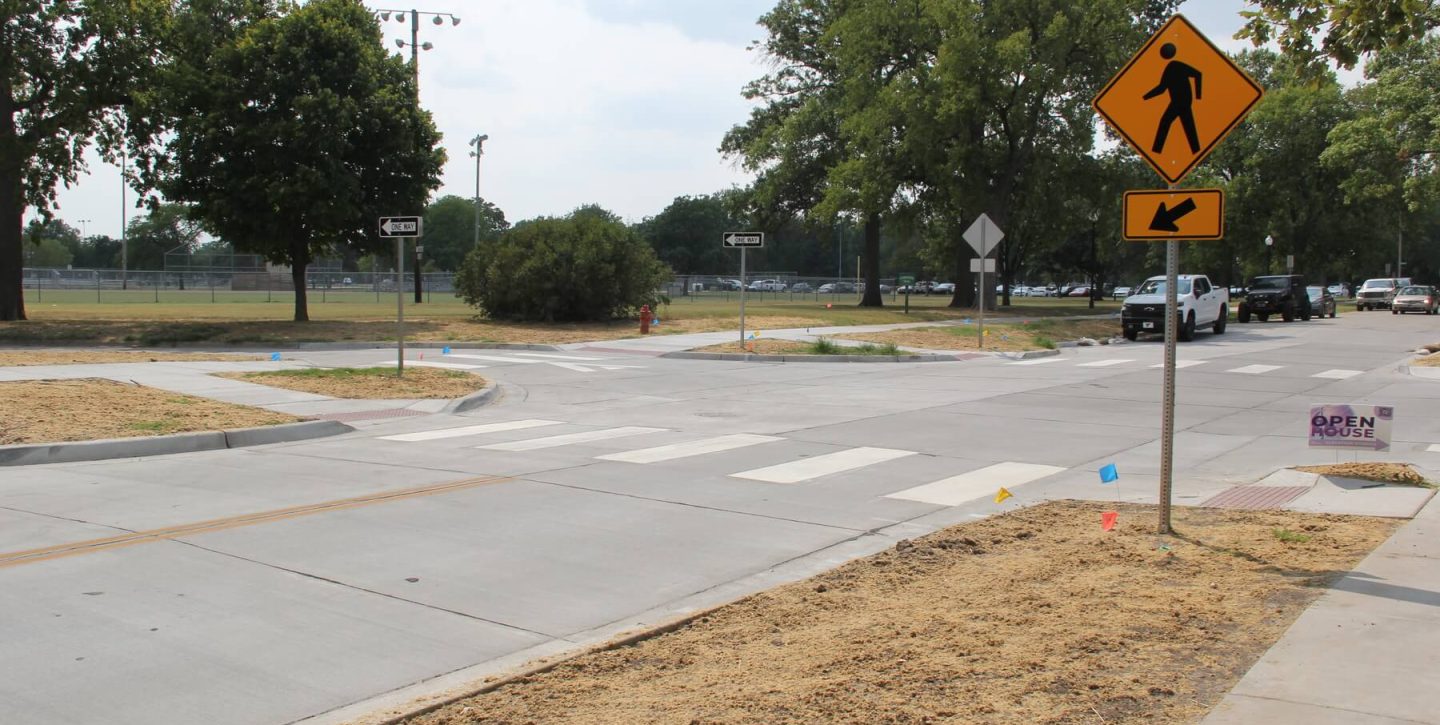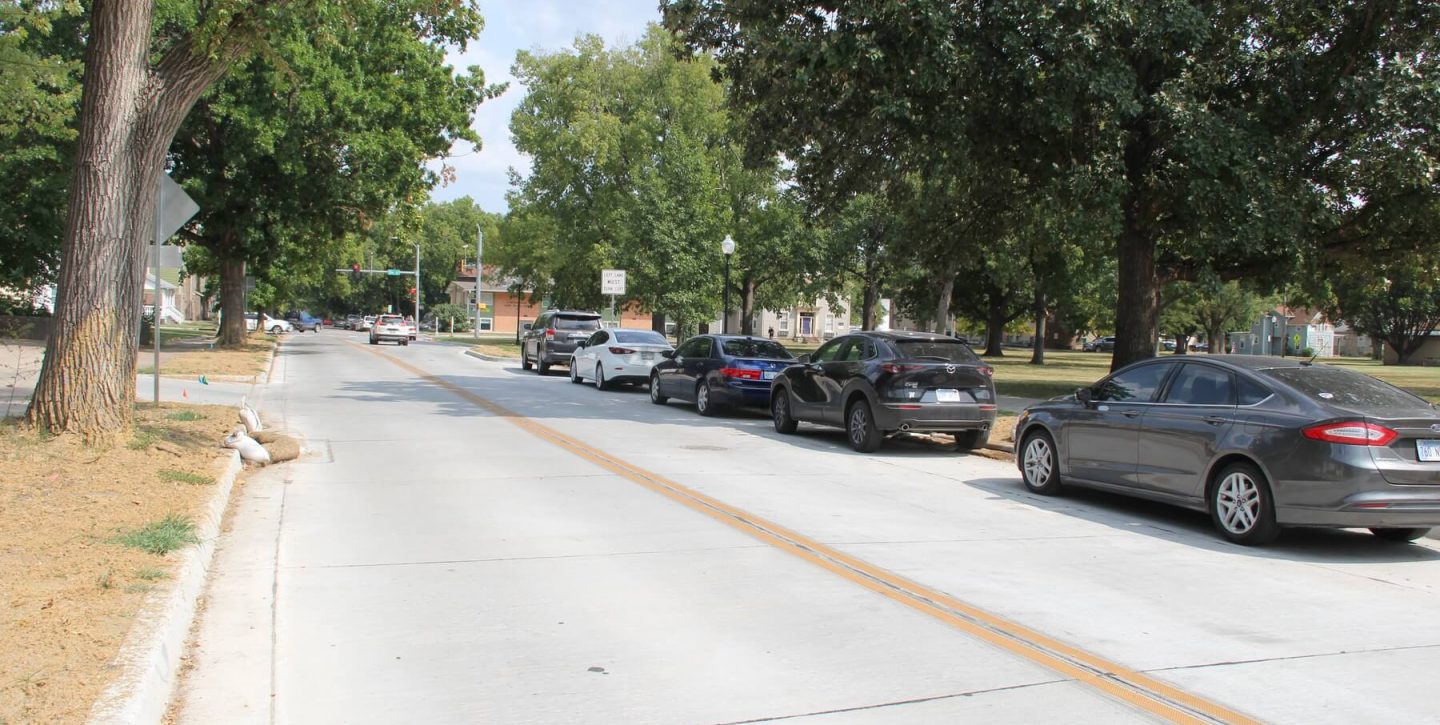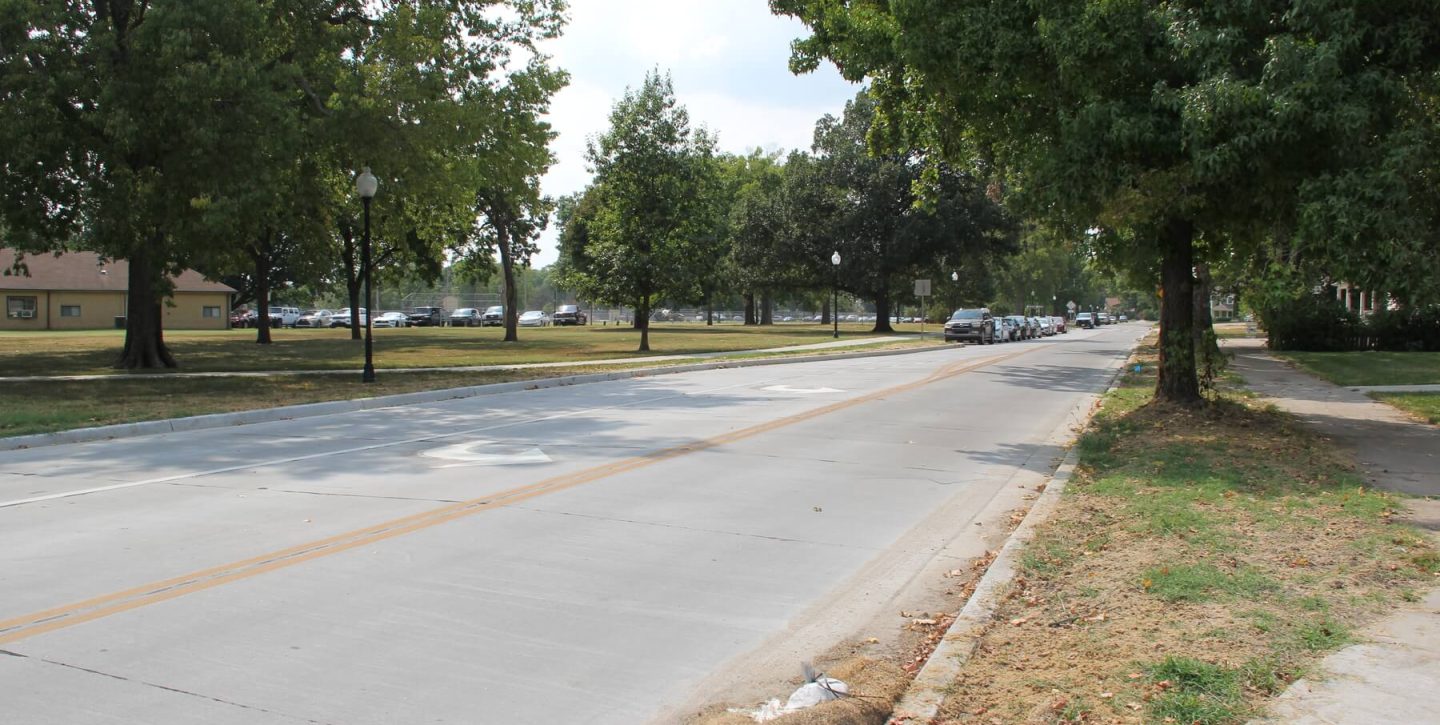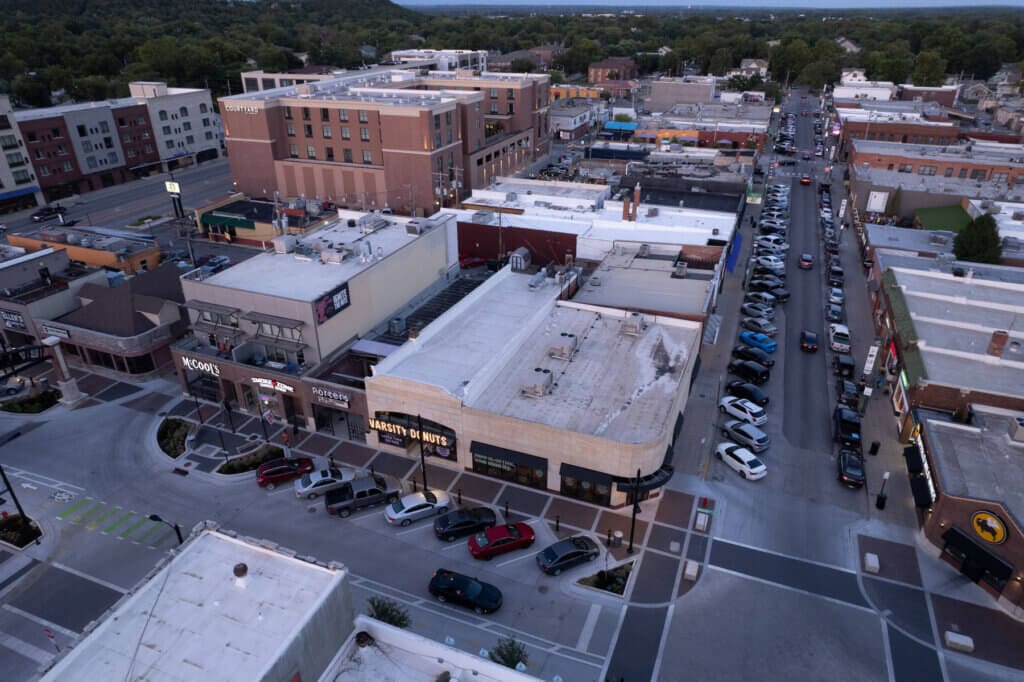Fremont Street




This project included a complete reconstruction of Fremont Street, a new, upsized water transmission main to serve Aggieville and the surrounding neighborhoods, and upgraded pedestrian amenities.
Completed | City Project
Improvement Benefits
Improved Infrastructure
New 16-inch water transmission main, 8-inch water distribution mains, sanitary sewer lines, and rain gardens for drainage
Improved Amenities
New ATA bus stop with shelter and enhanced sidewalks with ADA ramps
Project Timeline
April 10, 2023
Phase 1 Construction Started
August 1, 2023
Phase 1 Construction Completed
February 12, 2024
Phase 2 Construction Started
October 25, 2024
Phase 2 Construction Completed
General FAQs
Will on-street parking remain along Fremont St?
Yes, parallel parking along the south side of Fremont Street, adjacent to City Park, will remain in place following the completion of construction.
What was the total cost of this project?
The total cost was $2,794,282.
How is this project being funded?
This project was funded through a combination of special street and highway funds (fuel taxes), stormwater funds, water funds, wastewater funds, and the 2023 Economic Recovery and Relief sales tax. Additionally, $340,872 of the project was through federal grant funding from Flint Hills ATA Bus for the shelter and pedestrian improvements.
What is the Economic Recovery and Relief sales tax?
On November 3, 2020, Manhattan voters passed a ballot measure to adopt a 0.5% Economic Recovery and Relief sales tax. The sales tax took effect on January 1, 2023 and will remain in effect for 10 years. The new City-wide 0.5% sales tax is coincided with the expiration of a 0.5% Riley County Sales that sunset on December 31, 2022. The new 0.5% city sales tax is levied within the entire city limits of Manhattan, including those portions of the City within Pottawatomie County.
The question calls for 70% of the funds to be dedicated to cost related to debt and infrastructure, 20% for job creation, recruitment, and retention initiatives, and 10% for workforce housing initiatives. The City is utilizing a portion of the funds dedicated to infrastructure and debt for many of the Aggieville infrastructure projects. The more TIF revenue that is generated in the district, the less the City will have to rely on the 0.5% sales tax revenue, which can be freed up for other projects in the city.
The question calls for 70% of the funds to be dedicated to cost related to debt and infrastructure, 20% for job creation, recruitment, and retention initiatives, and 10% for workforce housing initiatives. The City is utilizing a portion of the funds dedicated to infrastructure and debt for many of the Aggieville infrastructure projects. The more TIF revenue that is generated in the district, the less the City will have to rely on the 0.5% sales tax revenue, which can be freed up for other projects in the city.
What is the Aggieville Community Vision?
The City of Manhattan is leading an initiative to implement a community-wide vision for the future development of Aggieville as a vibrant, historic, pedestrian-oriented urban district that offers diverse shopping, dining, entertainment, and residential opportunities to students, visitors, and the broader community. A year-long process beginning in spring of 2016 resulted in a comprehensive and cohesive planning document with a clear direction for future development and civic improvements in the district, addressing and balancing the needs and desires of the district and the Manhattan community.
The Aggieville Community Vision plan document describes the future vision for Aggieville and projects to follow. The document is responding to the issues identified and the opportunities explored through research and community input we received through focus group meetings, outreach events, an open house, and our community survey yielding more than 4,200 responses. The plan was adopted by the City Commission via Ordinance no. 7280 on April 18, 2017.
In 2017, the the City partnered with Olsson Associates and Walker Consultants to determine future parking demand based on the redevelopment envisioned in the Aggieville Community Vision Plan and how that demand might be met through multi-level parking garages. Capacity and potential constraints on infrastructure, including water, sewer, and storm-water due to redevelopment were also assessed. The final Parking and Infrastructure Report provided cost estimates for various scenarios so policies for infrastructure, public–private partnerships, and parking management strategies could be implemented.
In December 2018, the Aggieville Community Vision to Reality Plan was adopted, putting the puzzle pieces of Aggieville future together. It’s a complete design concept that edges Aggieville closer to its envisioned future – a future that enhances Aggieville to achieve its fullest potential.
The Aggieville Community Vision plan document describes the future vision for Aggieville and projects to follow. The document is responding to the issues identified and the opportunities explored through research and community input we received through focus group meetings, outreach events, an open house, and our community survey yielding more than 4,200 responses. The plan was adopted by the City Commission via Ordinance no. 7280 on April 18, 2017.
In 2017, the the City partnered with Olsson Associates and Walker Consultants to determine future parking demand based on the redevelopment envisioned in the Aggieville Community Vision Plan and how that demand might be met through multi-level parking garages. Capacity and potential constraints on infrastructure, including water, sewer, and storm-water due to redevelopment were also assessed. The final Parking and Infrastructure Report provided cost estimates for various scenarios so policies for infrastructure, public–private partnerships, and parking management strategies could be implemented.
In December 2018, the Aggieville Community Vision to Reality Plan was adopted, putting the puzzle pieces of Aggieville future together. It’s a complete design concept that edges Aggieville closer to its envisioned future – a future that enhances Aggieville to achieve its fullest potential.
All Projects
Start Your Project in Aggieville
Aggieville is a vibrant and growing district in the heart of Manhattan, right next to Kansas State University. It draws community members, students, and tourists all year round and is the perfect place for your next project.
